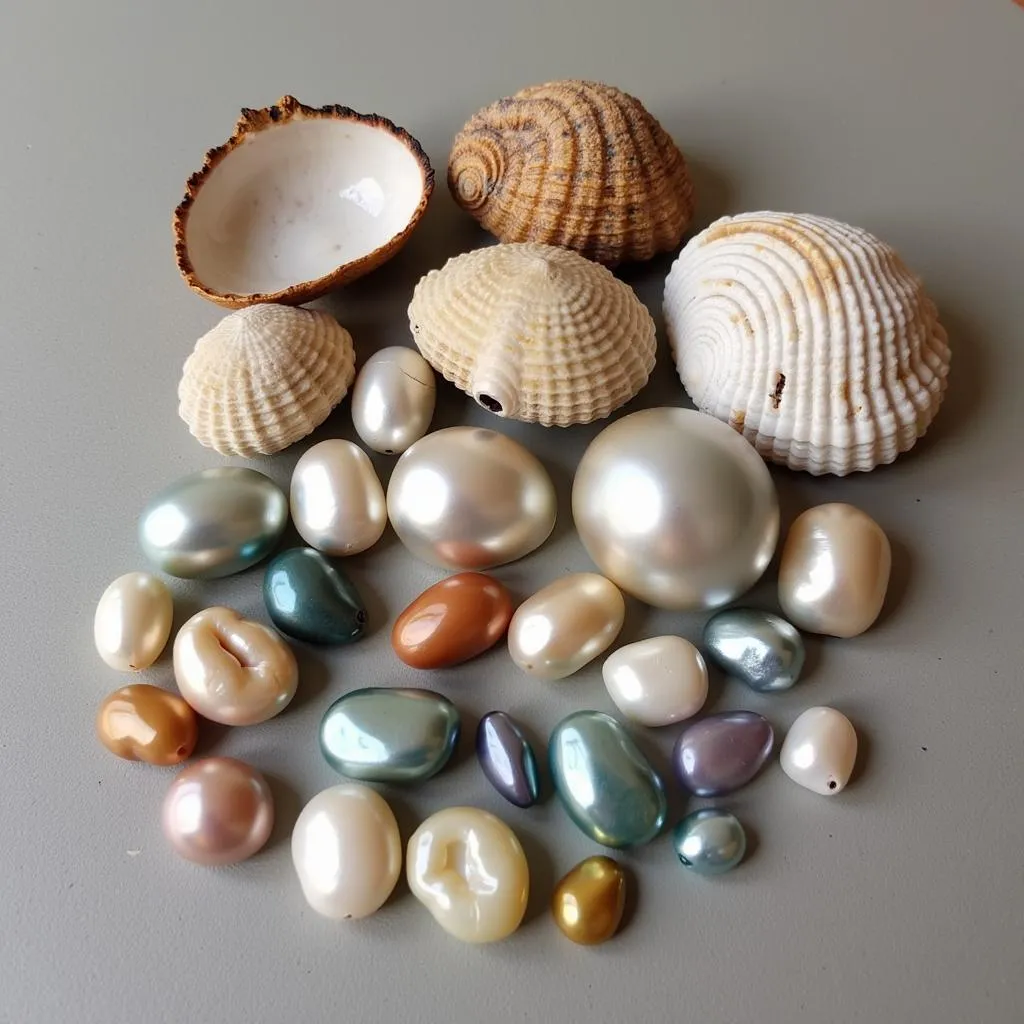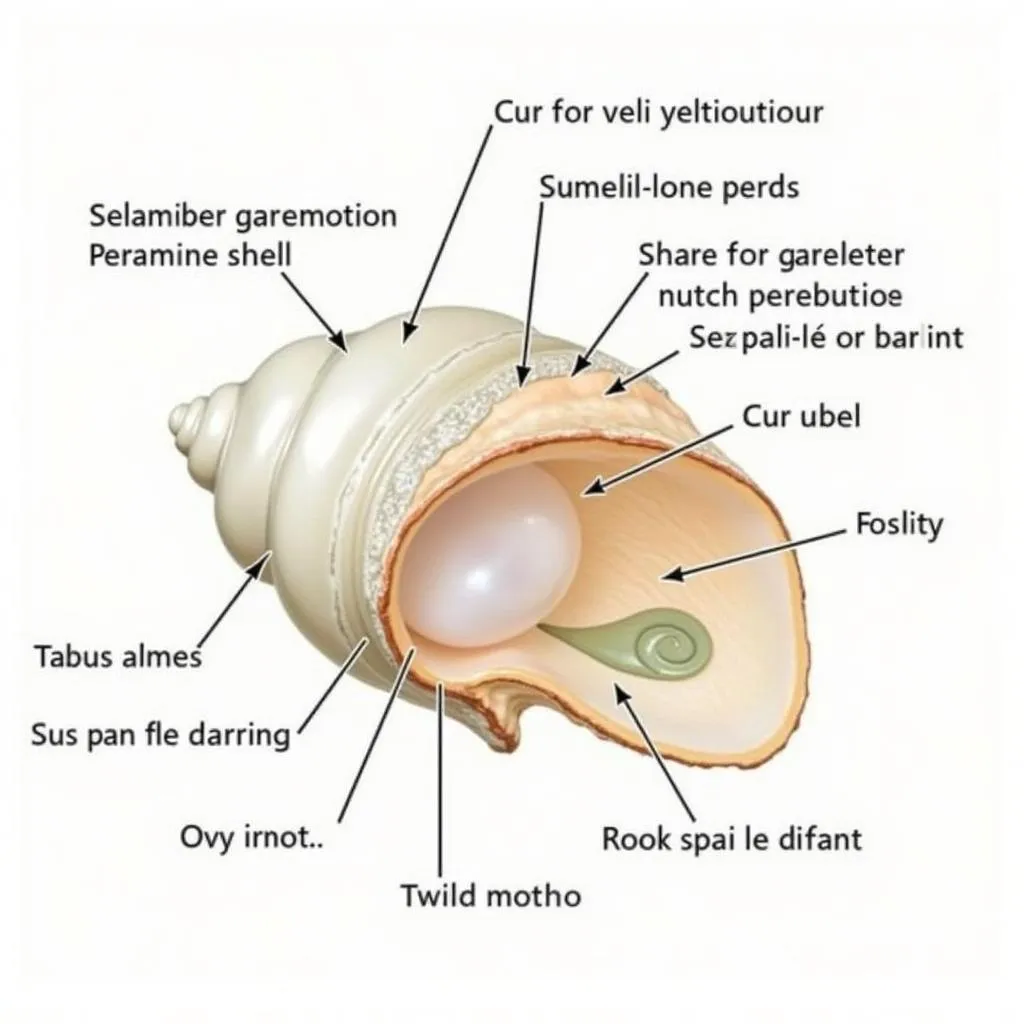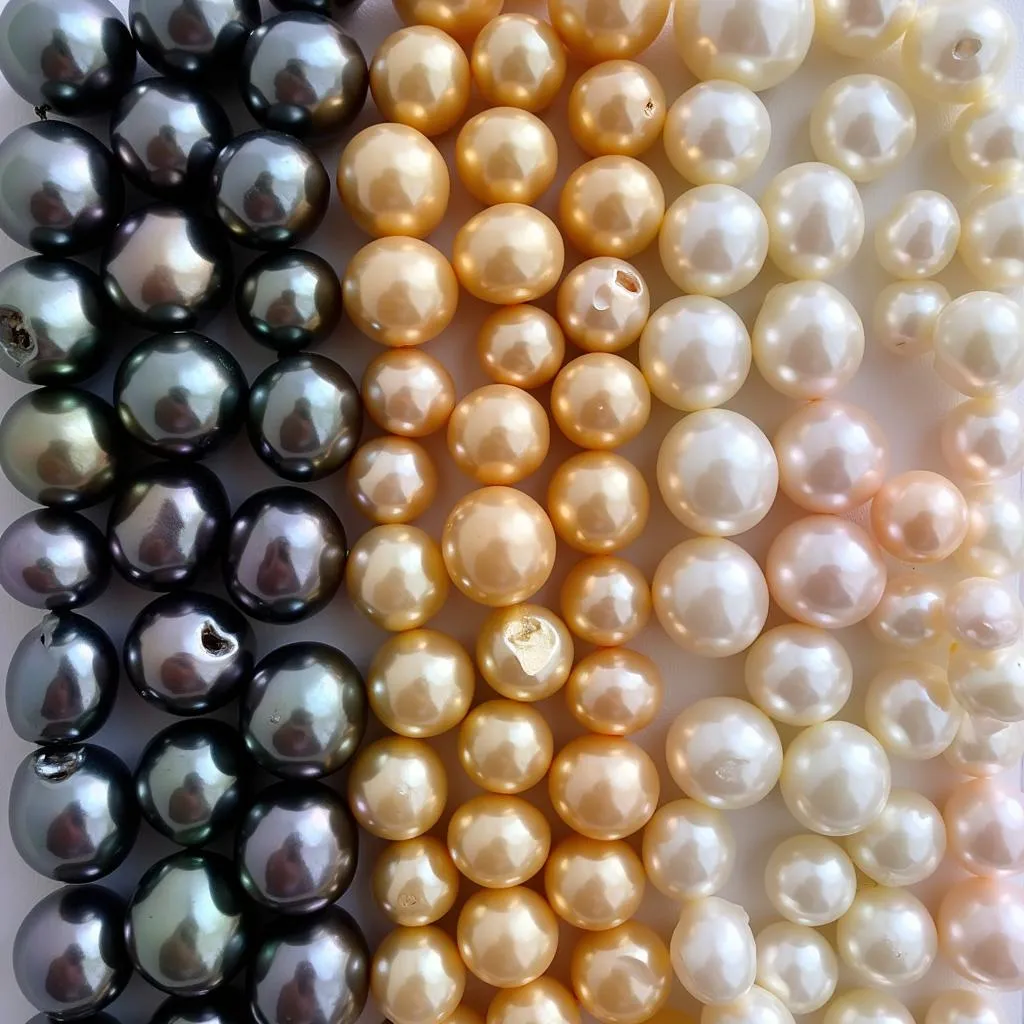Can clams really create those lustrous, colorful pearls we often associate with elegance and luxury? The answer might surprise you. While clams are bivalve mollusks, just like pearl-producing oysters, they don’t typically create the kind of pearls we wear as jewelry.
 Clams and pearls side by side
Clams and pearls side by side
Understanding Pearl Formation
Pearls, regardless of their origin, are formed through a fascinating natural process. When an irritant, such as a grain of sand or a parasite, gets lodged inside the shell of a mollusk, the creature defends itself by secreting a substance called nacre. Nacre, also known as mother-of-pearl, is composed of calcium carbonate and conchiolin, which are arranged in a specific crystalline structure that reflects light and creates the iridescent shimmer we associate with pearls.
 Cross-section of a mollusk shell during pearl formation
Cross-section of a mollusk shell during pearl formation
Clams and Their Treasures
While clams might not produce the large, perfectly round pearls used in high-end jewelry, they can create other intriguing treasures. Some clam species can produce small, non-nacreous pearls known as “quahog pearls.” These pearls lack the iridescence of traditional pearls and come in various colors, including white, purple, and even black. While not as commercially valuable as oyster pearls, quahog pearls are still considered collectible items.
The Allure of Colored Pearls
The world of pearls extends beyond the classic white. Colored pearls, primarily produced by specific oyster species, captivate with their array of hues. From soft pastels like pink and lavender to vibrant shades like gold and blue, these natural wonders acquire their color from the nacre’s pigments and the way it reflects light.
 Showcasing the diversity of colored pearls
Showcasing the diversity of colored pearls
Exploring the Depths of Mollusk Diversity
The ability to produce pearls, whether nacreous or non-nacreous, highlights the remarkable diversity within the mollusk family. While clams might not be the primary source of the prized pearls we adorn ourselves with, their contribution to the world of gems and natural wonders is significant.
In conclusion, while clams might not create the traditional colored pearls we envision, their close relationship to oysters and their capacity to produce unique treasures like quahog pearls make them fascinating members of the mollusk family. The allure of pearls, regardless of their origin, lies in their natural beauty and the captivating stories they hold within their iridescent depths.

